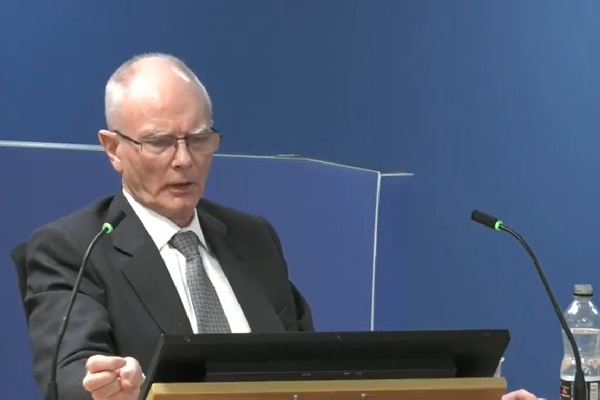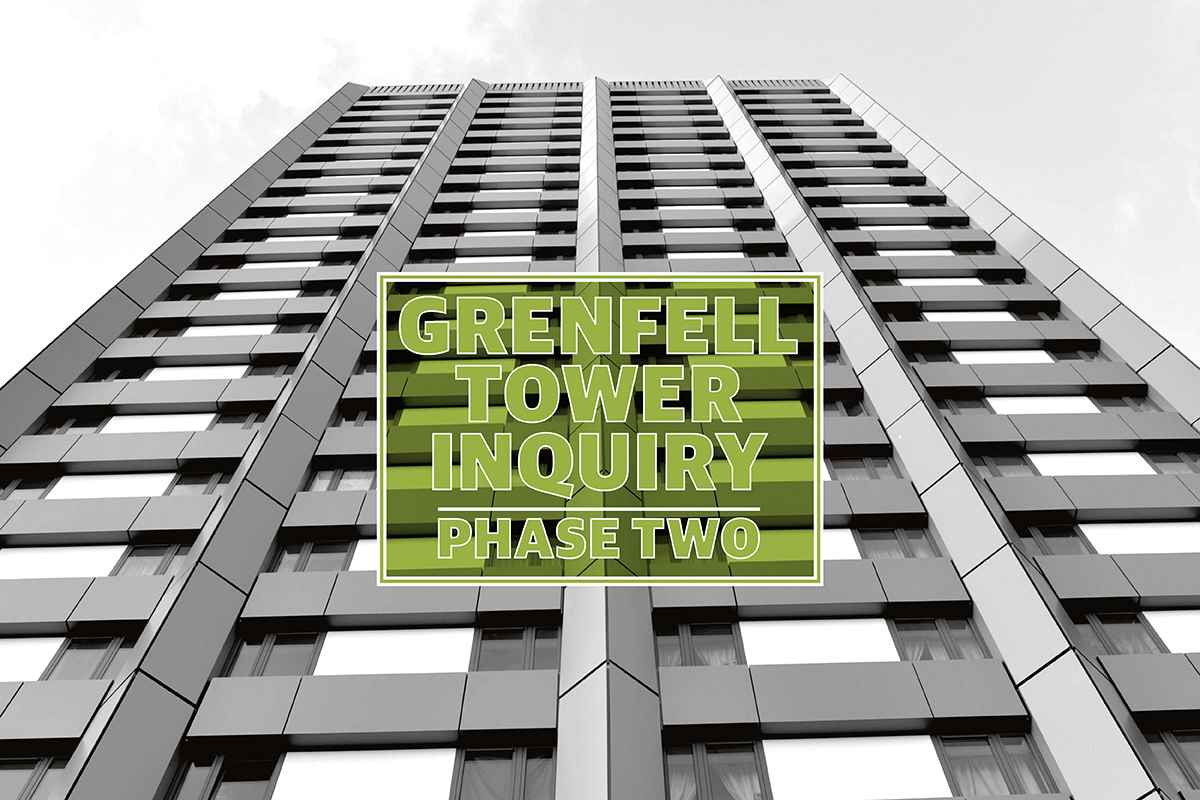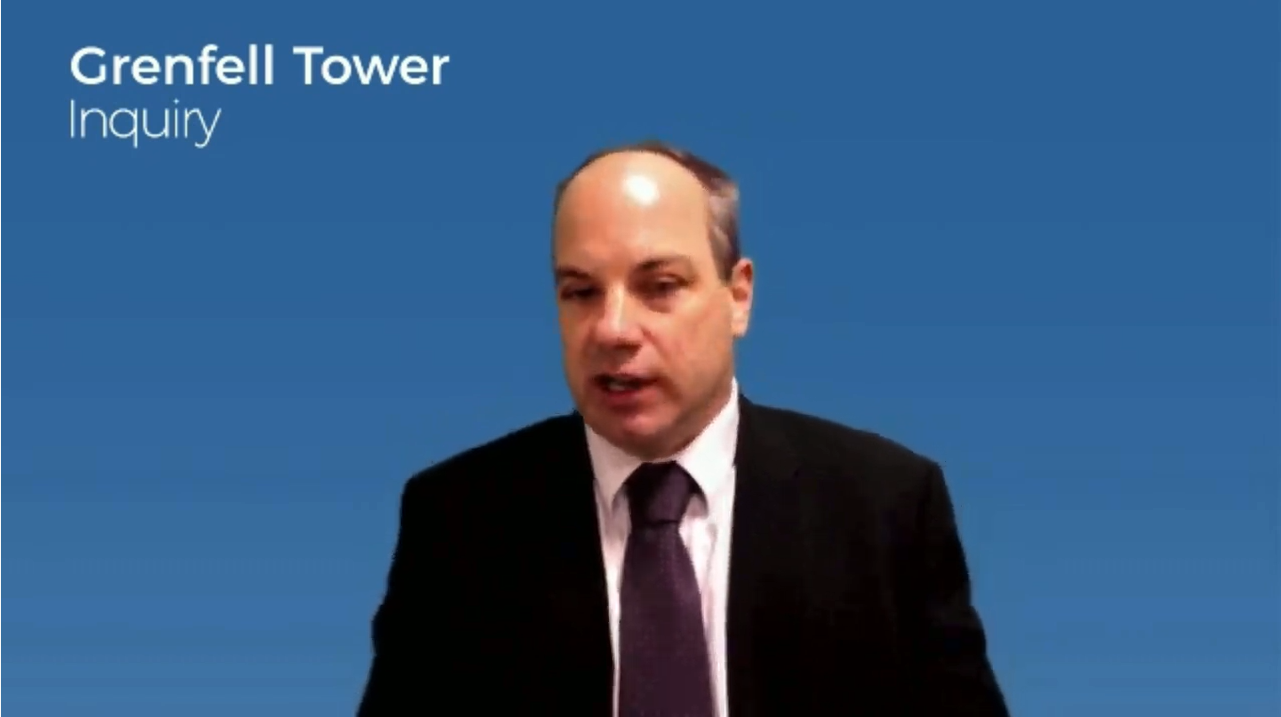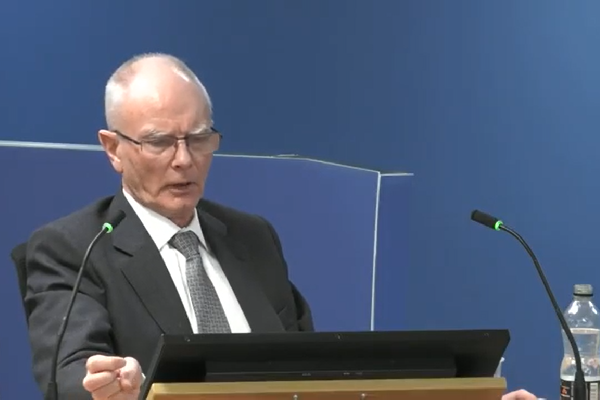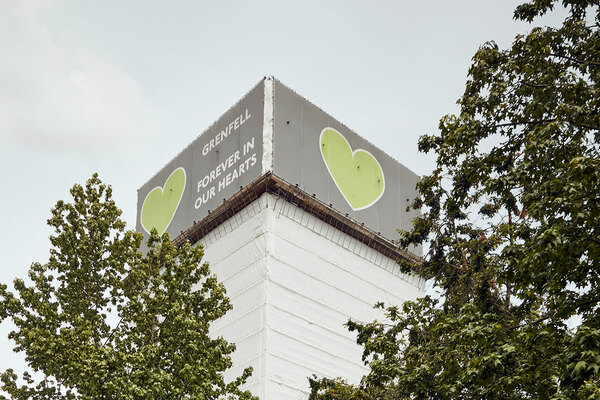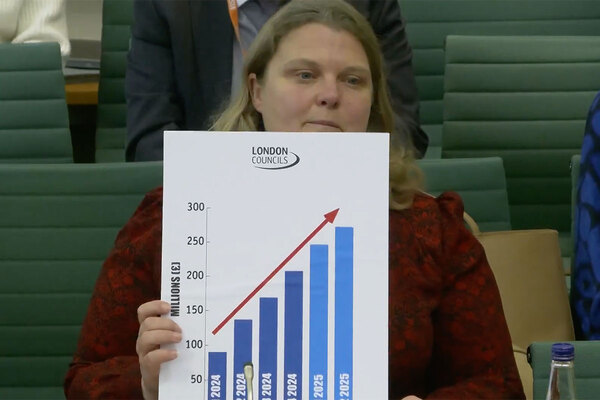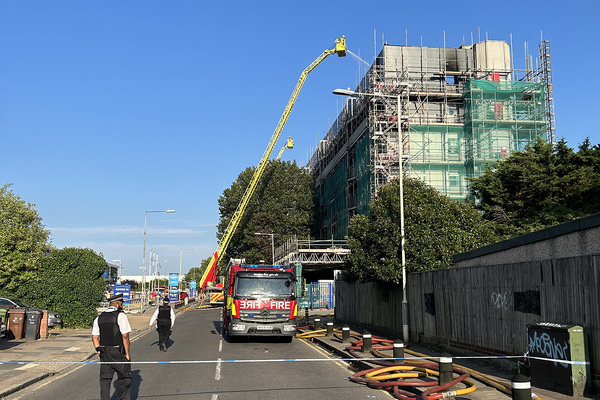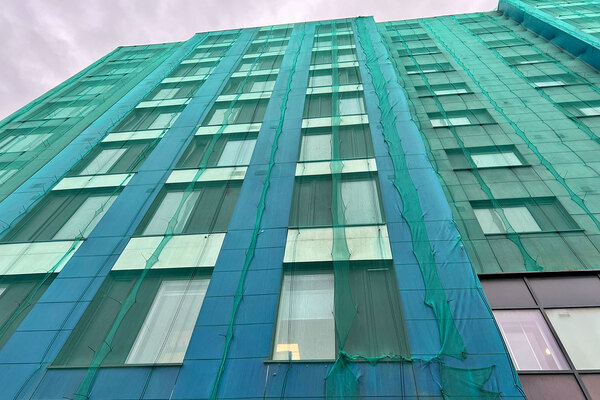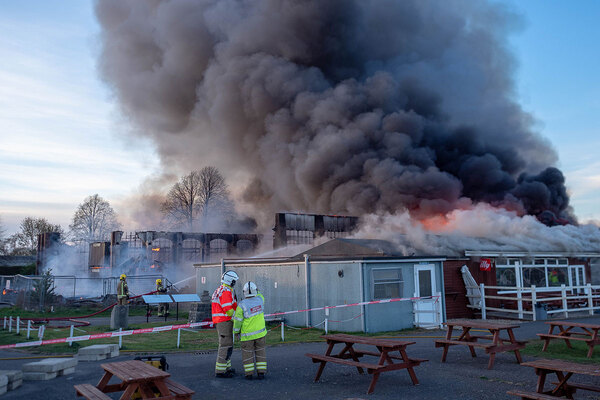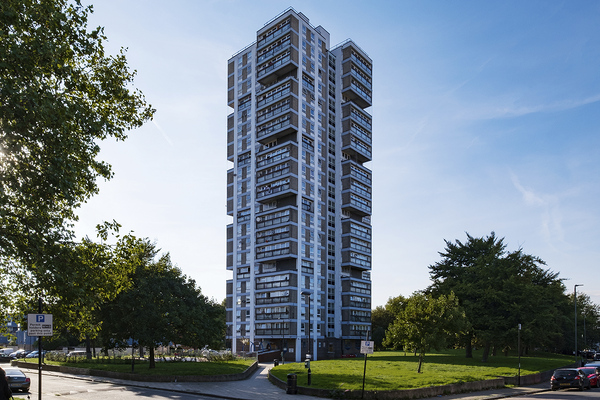LABC did not remove Kingspan certificate despite hearing insulation ‘carried on burning for 20 minutes’ in fire tests
A membership body which provided a certificate saying Kingspan’s combustible insulation could be used on high-rises did not withdraw it despite being told the product “carried on burning for 20 minutes” after the flame was removed in fire tests, the Grenfell Tower Inquiry heard today.
Local Authority Building Control (LABC) produced various certificates saying Kingspan’s K15 insulation could be “considered a material of limited combustibility” which could be used on high-rise buildings between 2009 and 2014.
The firm’s witnesses have now accepted these statements were inaccurate, misleading and unjustified by the test evidence – but they helped K15 become a market-leading insulation product for high-rises before the Grenfell fire.
Today the inquiry revealed emails showing senior staff members at the LABC debated the wording of the certificate in 2014 amid concerns in the industry about the product, but did not remove it or warn customers.
Lorna Stimpson, now chief executive of the body, jokingly asked at one stage, “These issues have been burning for a LONG time though, hasn’t it?”
The inquiry also learned LABC was involved in discussions to produce industry guidance permitting the use of untested cladding systems with combustible insulation in 2014 and 2015. Minutes of the meeting said the purpose of this guidance was to find “possible solutions to allowing polyurethane-type insulation materials to be used in cladding systems over 18m”.
Yesterday, the inquiry heard how the LABC brushed off warnings about its certification of K15 and sought lucrative commercial sponsorship deals with Kingspan.
Today, Barry Turner, former director of technical policy at the LABC, was asked about an email from October 2014, sent by his colleague David Ewing, which noted that “K15 has been used outside the scope of installation” and “recent fire tests have apparently shown it continued to burn for 20 minutes after a flame was taken away”.
The National House Building Council (NHBC), a large building-control body, was said to be “unhappy with its use, and [is] looking for industry-wide shutdown”.
Mr Turner responded by saying he would join a call with NHBC about the issue, but was “not going to say or admit to anything at this stage”.
“Do you recall that discussion you had [with the NHBC]?” asked counsel to the inquiry Kate Grange QC.
“I don’t recall that conversation or whether it took place,” said Mr Turner.
“Can you recall there being any consideration in the autumn of 2014 about whether the LABC… certificate for K15 ought to be withdrawn in the light of this significant information?” asked Ms Grange.
“I believe that there were discussions, and I believe that it may well have been reported to the board, but I can’t comment on that. I have no recollection of the process that it went through,” said Mr Turner.
Discussing the issue further, another LABC colleague emailed in December 2014 referring to a meeting where the “sales director of Kingspan was very bullish”, but wrote there was “no likelihood of Kingspan coming up with tests that prove it works in high-risk constructions”.
Mr Turner replied to the email to say he had come away from the meeting with the impression that if the material was “not absolutely in line with the specifications indicated” on an official certificate, “then it should not be used”.
“I don’t recall the meeting… so I can’t comment on the content of the meeting in any detail,” said Mr Turner today.
“Did you think at that point about issuing a warning to your members to say, well, there’s a problem here, we’ve been issuing certificates for many years now for the K15 product and those certificates have inaccurate information on them?” asked Ms Grange.
“I left it to the others that were dealing with the matter… to follow that up,” said Mr Turner.
In December 2014, Mr Turner suggested amending the LABC certificate so it continued to say the product was suitable “for use in rainscreen [cladding] applications above 18 metres in height”, but merely added the words “however, see scope and conditions of certificate for more information”.
“I’m still nervous, but can’t see that we can do any more,” he added in an email suggesting the change.
“You see the problem with that statement, that you’re suggesting that it’s inferring global approval for use of K15 in rainscreen applications over 18 metres in height, whereas it should have said the K15 complies… only when used in one specific system configuration,” said Ms Grange.
“With hindsight and with legal appraisal of it, I would not disagree,” said Mr Turner. “That was my wording. If my wording was not correct, and you challenge that now, I would accept that. But it was not done with legal implications in mind.”
The issue was raised with him again by Paul Everall, the LABC chief executive at the time. He emailed asking about “some insulation manufacturers producing products which do not meet the non-combustibility requirements of buildings above 18 metres”.
Mr Turner replied to say this was “an insurance issue rather than compliance with regs”.
“It appears you’re saying that the issue with K15 is an insurance issue rather than compliance with regs, doesn’t it, based on this email,” said Ms Grange.
“It might appear like that, but whether it was or not, I cannot confirm or deny,” said Mr Turner.
“Because it absolutely was a compliance issue with the regulations… wasn’t it?” asked Ms Grange.
“It depends on the topic of the conversation and I don’t know what the conversation was,” said Mr Turner.
When the issue was raised again in January 2015, Ms Stimpson wrote: “This issue has been burning for a LONG time though, hasn’t it? (Get it !!!!) Why is it raising its head again all of a sudden?”
“Can you help us as to what her awareness was at this time of the problem… did you ever discuss that with her?” asked Ms Grange.
“No,” replied Mr Turner.
Later, Mr Turner was asked about Technical Guidance Note 18, which was first published in June 2014 by the Building Control Alliance (BCA). This guidance opened the door to the use of ‘desktop studies’ – assessments by fire engineers of untested systems with combustible materials.
Mr Turner said he did not have concerns about the use of desktop studies as he believed official guidance to the building regulations allowed for this.
According to minutes of a meeting in December 2014, the LABC’s chair, Steve Evans, who is now at the NHBC, “outlined the work carried out to date in identifying possible solutions to allowing polyurethane-type insulation materials to be used in cladding systems over 18m”.
“The choice of the wording is not as we would like to see it today, but the issue was to resolve the confusion in the industry,” Mr Turner said.
A second version of Technical Guidance Note 18 was published by the BCA in June 2015. This version widened the bodies that were able to provide assessments by allowing any “suitable qualified fire specialist” to carry tests out, compared to the previous version, which determined the studies could only be done by UKAS-accredited laboratories.
Ms Granger told Mr Turner that the second version of Technical Guidance Note 18 was described in internal emails between Kingspan employees as “incorporating some of the changes that we had asked for”.
Mr Turner said he was aware Kingspan had been in discussion with Mr Evans, but he did not know that they had asked for changes.
The inquiry was then shown emails exchanged between BCA members 10 days after the Grenfell Tower fire, discussing whether the guidance note should be withdrawn.
Mr Evans said doing so would be “a serious overreaction” and “will not only leave a lot of schemes already under construction in jeopardy but will also cause issues with the completed schemes where builders have used the note to demonstrate compliance”.
In the same email chain, Mr Turner said withdrawing the guidance would “leave BCA with egg on its face” and suggested “a review” before any decision was made about whether to withdraw it.
The inquiry continues, with Mr Ewing, who began his evidence this afternoon, continuing next week.
Sign up for our weekly Grenfell Inquiry newsletter
Each week we send out a newsletter rounding up the key news from the Grenfell Inquiry, along with the headlines from the week
Already have an account? Click here to manage your newsletters
